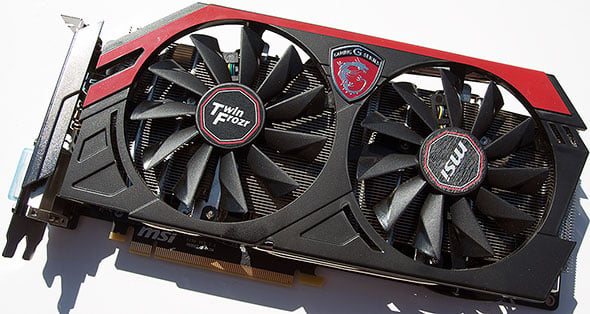MSI sells two different
version of the GeForce GTX 780 Ti -- a standard model that sticks with reference specs and the one reviewed here. What's unique about this card is that it comes with three pre-configured profiles.

The first thing we noticed about MSI's entry into this roundup is the card's weight. It's remarkably light compared to the other two cards, and that's largely because there's less material here. MSI's Twin Frozr cooler doesn't wrap around the top and sides like the other two cards, and it doesn't cover the back like Gigabyte's.
Other than using a minimalistic shroud, the overall design is similar to EVGA's and Gigabyte's respective cooling solutions. There's a metal plate that reinforces the PCB, and on top of that is a large finned heat sink with heatpipes running through it. Dual fans keep the entire apparatus cool.

The backside of the card is naked, though it's held straight by a metal plate attached to the other side. MSI also uses military class components and high quality parts such as solid capacitors and chokes. What's impressive about this is MSI uses these parts without jacking up the price of the card -- of the three in this roundup, the
Twin Frozer Gaming OC Edition is the least expensive.

One area where MSI stuck with NVIDIA's reference blueprint is the power input. The card sports 6-pin and 8-pin PCI-E connectors, whereas both of the other cards in this roundup requires dual 8-pin connectors.

By default, MSI's card runs in Gaming Mode, one of three different modes that determine clockspeed. You can switch to Silent Mode or OC Mode with a press of the button on the MSI's gaming application, though the card reverts back to Gaming Mode as soon as you close the app or reboot your PC.
To get around that, you can download MSI's Afterburner software. It allows you to create up to five different profiles, any of which you can optionally apply at startup. For our testing, we configured the card to run in OC mode, which bumps up the base clock to 1020MHz and the boost clock to 1085MHz.










